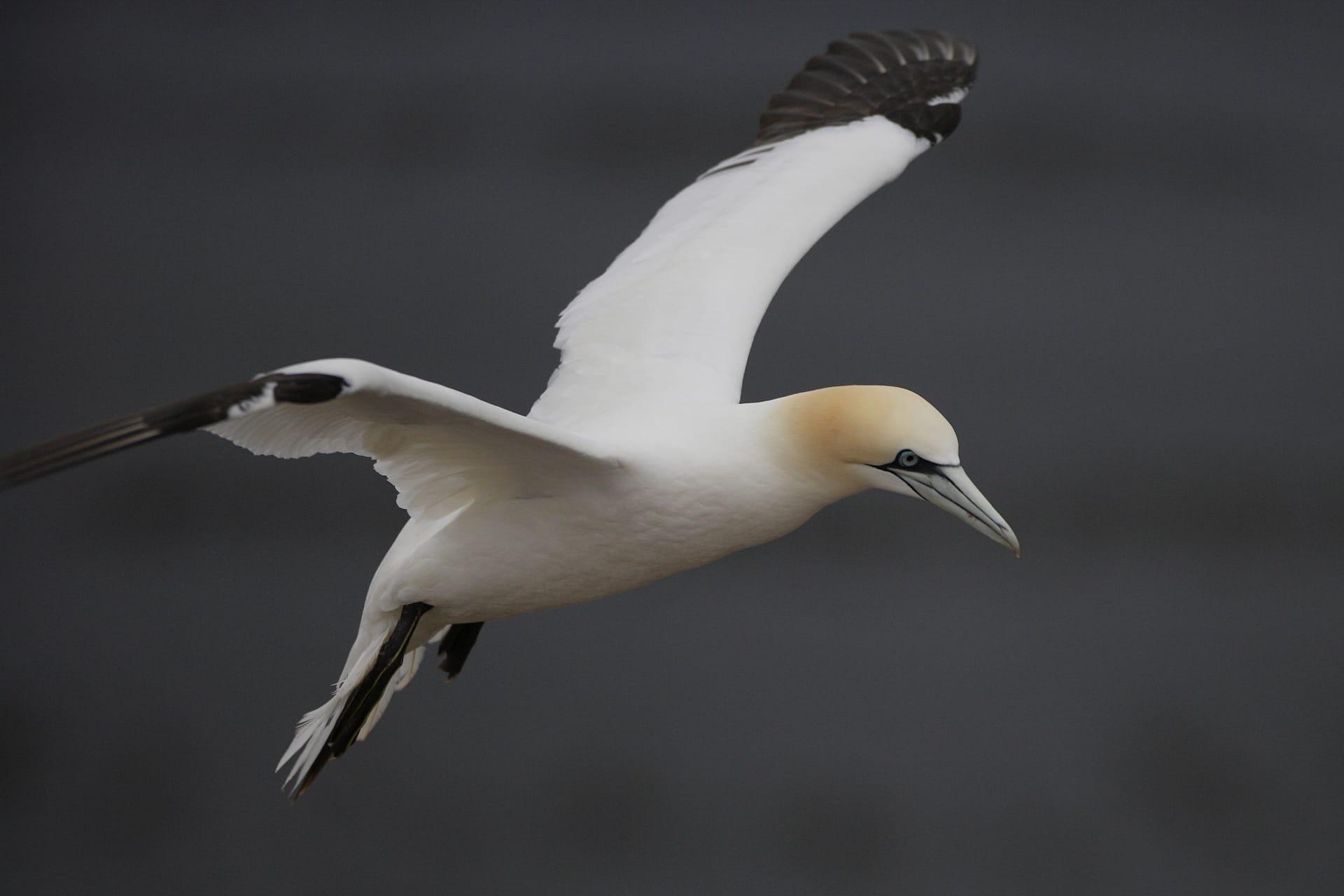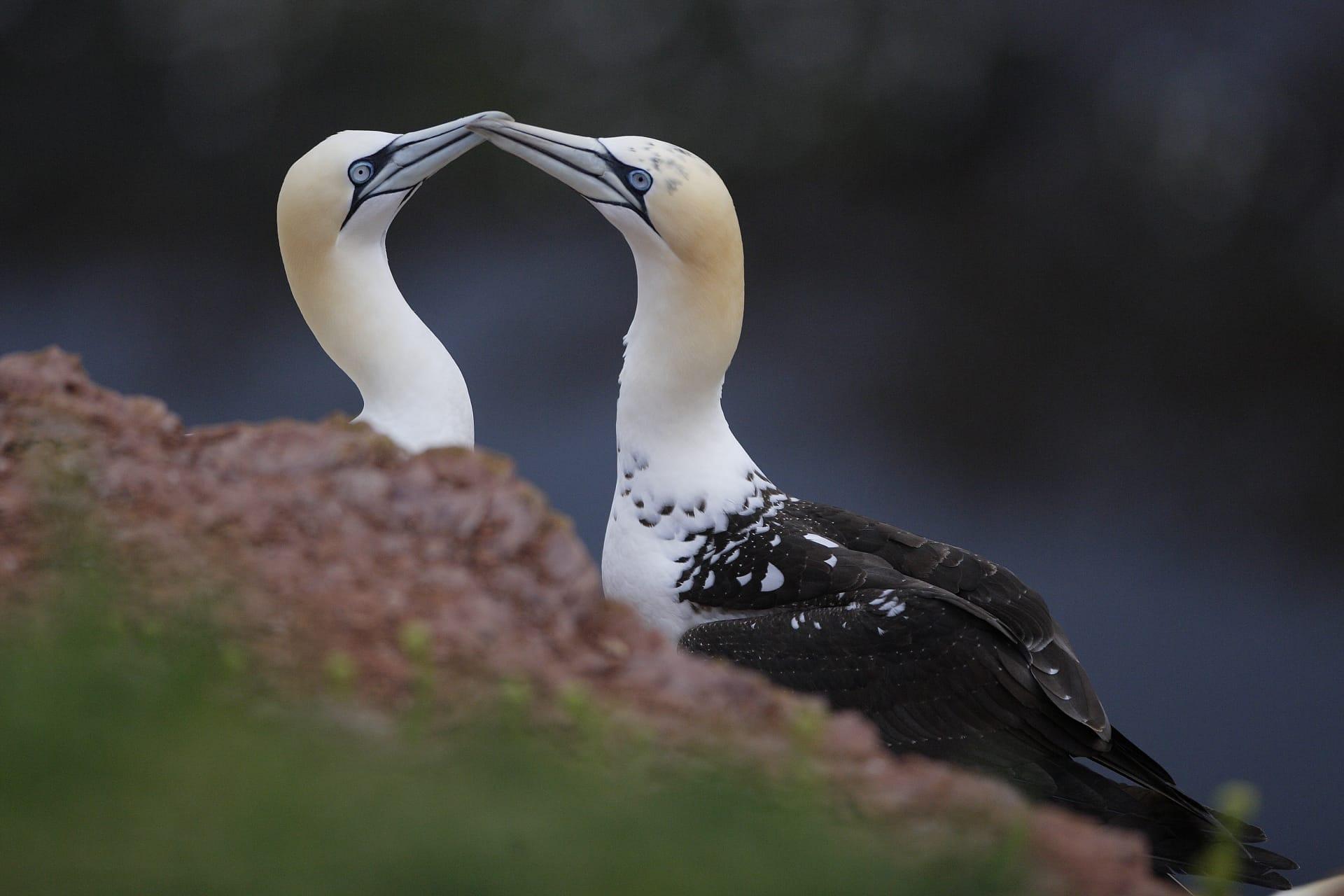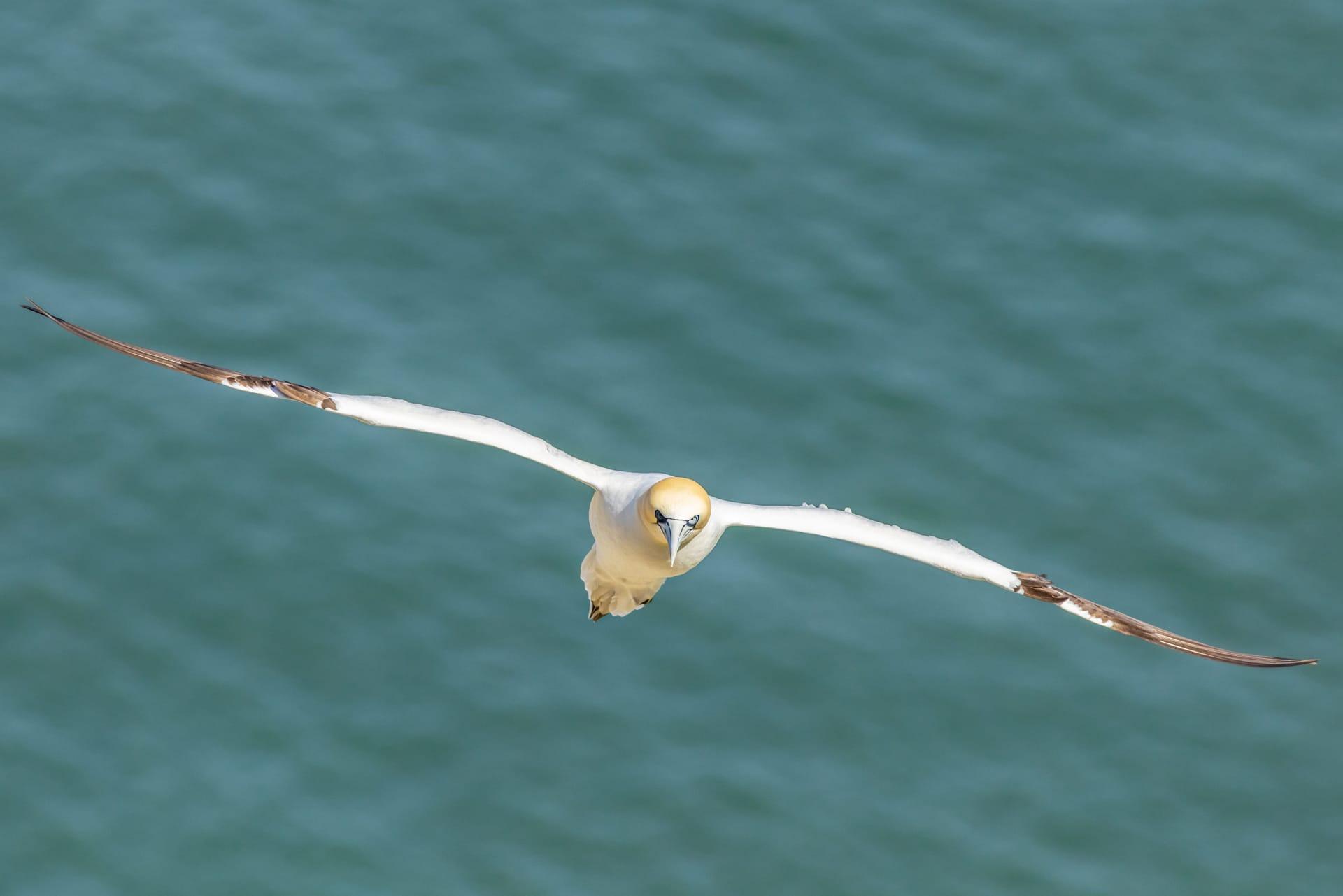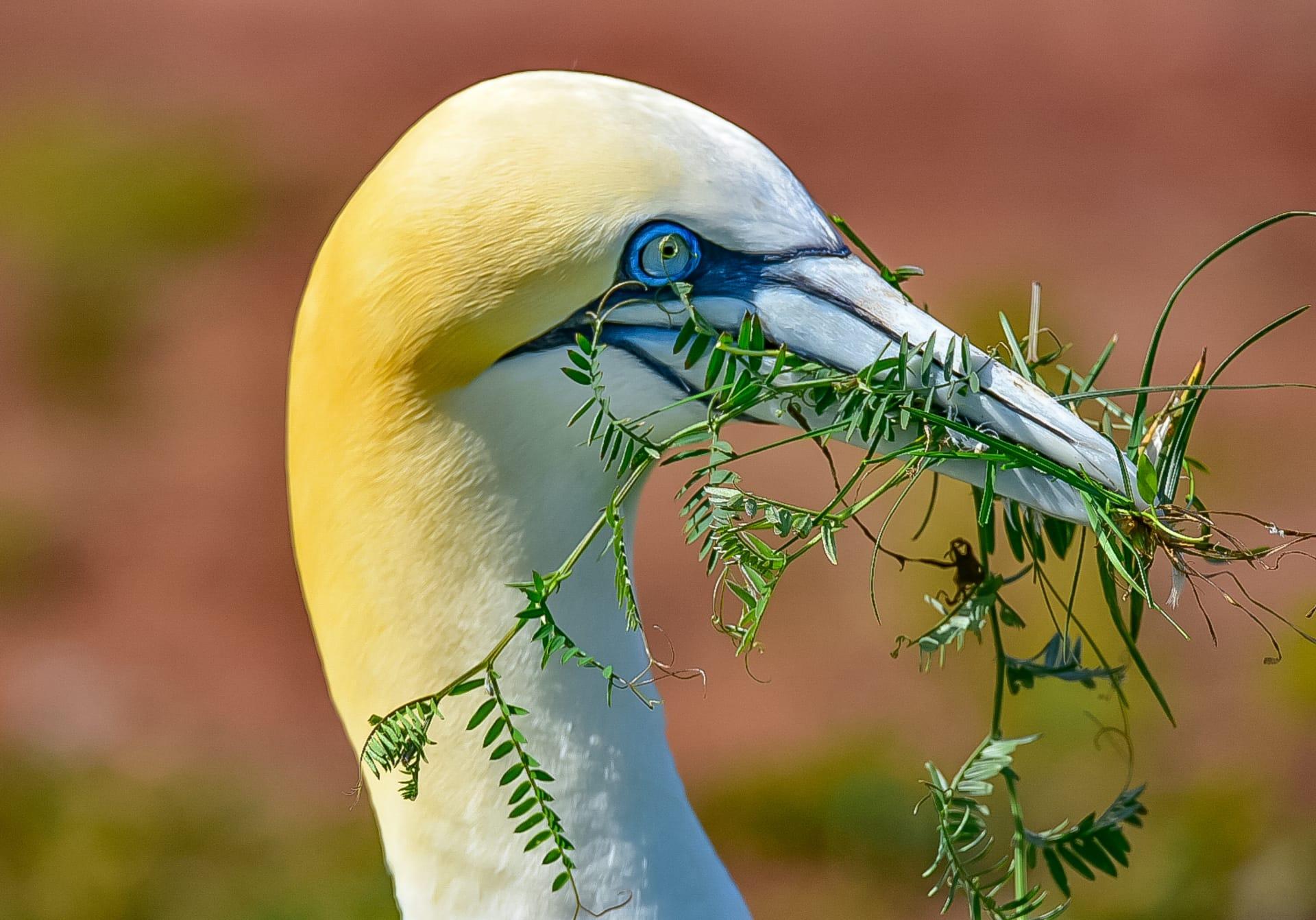Gannet Characteristics
- Home /
- Mini Encyclopedia /
- Animal /
- Gannet Characteristics
1
Gannets are large seabirds known for their majestic appearance and striking features. Typically, an adult gannet measures about 35 inches in length, with a wingspan reaching up to 70 inches, making them one of the largest seabirds in their habitat. Their lifespan is impressive too, often living up to 35 years in the wild. With a predominantly white plumage, they have distinctive black wingtips and a golden-yellow head, creating a contrast that's hard to miss. Gannets are also known for their streamlined bodies, adapted for their high-speed aquatic lifestyle.
One of the most remarkable organs of the gannet is its uniquely structured beak. This beak, about 6 inches long, is not only sharp and pointed but also features serrated edges. This design is crucial for their hunting technique. When gannets dive into the water at speeds of up to 60 miles per hour to catch fish, this specialized beak cuts through the water with minimal resistance, enabling them to catch their prey with remarkable precision. Moreover, the beak's structure helps them hold onto slippery fish, ensuring a successful hunt.

2
Question: Why do gannets often dive into the water from great heights?
Answer: Gannets dive from high altitudes, sometimes over 100 feet above the water's surface, to hunt for fish. This high-altitude diving strategy is a part of their unique feeding technique. The height provides them with a gravitational advantage, allowing them to reach speeds of up to 60 miles per hour as they dive. This rapid descent is crucial for two reasons: it gives them the momentum to penetrate deep into the water, and it takes fish by surprise, leaving them with little time to escape. This hunting method demonstrates the gannet's exceptional skill in airborne hunting and their ability to adapt to the marine environment.

3
Gannets showcase extraordinary mobility features, particularly in their flight. They are known for their powerful and agile flying abilities, often traveling long distances in search of food. A gannet can cover up to 300 miles in a single day during foraging trips. Their long, slender wings are adapted for both dynamic soaring and gliding, which conserves energy during these long flights. Additionally, gannets possess strong chest muscles that facilitate powerful wingbeats, necessary for their high-speed dives.
The hunting technique of gannets is a spectacular display of precision and agility. When hunting, they spot their prey from the air, often from heights exceeding 100 feet. Once a target is locked, they fold their wings back and dive headfirst into the sea at incredibly high speeds. Upon hitting the water, they use their strong neck muscles to protect their head and extend their wings slightly to steer underwater. Gannets are able to dive up to 22 meters deep, chasing their prey with agility. Their diet primarily consists of small fish and squid, which they catch with remarkable efficiency.

4
Gannets predominantly inhabit coastal regions, preferring rocky cliffs and islands for nesting. These environments offer them safety from land predators and easy access to the ocean for food. The North Atlantic is a common habitat, with significant populations found around the coasts of the UK, Norway, and North America. The proximity to water is essential for their feeding habits, as gannets rely heavily on the abundance of fish in these regions.
Reproduction and breeding are significant aspects of the gannet's life. They are monogamous birds, often forming long-term pair bonds. Breeding season sees large colonies of gannets gathering on cliffs where they build their nests out of seaweed, grass, and feathers. A single egg is laid each season, and both parents take turns incubating it for about 6 weeks. Gannet chicks are nurtured for another 3 months before they fledge. These breeding colonies are crucial for the survival of the species, as they offer a protected environment for raising their young.

5
Book: "The World of the Gannet" by Nigel Redman. This book, published in the UK in the 1990s, offers a comprehensive insight into the life of gannets. Redman, an esteemed ornithologist, delves into various aspects of gannet behavior, including their migratory patterns, feeding habits, and breeding rituals. The book is well-regarded for its detailed descriptions and easy-to-understand language, making it a favorite among bird enthusiasts.
Book: "Seabirds: Masters of the Ocean" by Maria Gomez. Published in the United States in the early 2000s, this book focuses on seabirds, with a significant portion dedicated to gannets. Gomez, a marine biologist, explores the relationship between gannets and their marine environment. She discusses the impact of climate change on their habitats and feeding patterns. The book is praised for its informative content and stunning photography, providing readers with a vivid portrayal of the life of seabirds like the gannet.